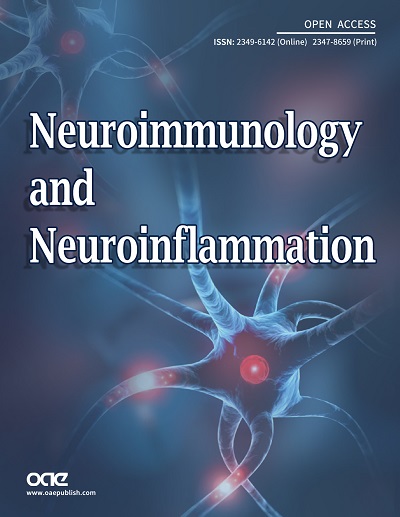Immunotherapeutic approaches for treatment of brain tumors
Antigenic differences between normal and malignant cells of the cancer patient form the rationale for clinical immunotherapeutic strategies. One emerging strategy in the treatment of tumors involves stimulation of an immunologic response against the neoplastic cells. The hope is that the immune system can be called into play to destroy malignant cells. However, in most instances, proliferating tumors do not provoke anti-tumor cellular immune responses. The precise mechanisms that enable antigenic neoplasms to escape host immunity are incompletely understood. The cells appear to escape recognition by the immune system in spite of the fact that neoplastic cells form weakly immunogenic tumor associated antigens.
The ultimate goal of cancer therapy is the elimination of every remaining tumor cell from the patient. It is unlikely that a single form of therapy is capable of achieving this goal. A number of papers in this special issue are presented which explore the various issues encountered with immunotherapeutic approaches to brain tumors. In particular one paper outlines the various clinical trials that have been attempted for treatment of brain tumors using various immunotherapeutic approaches. Although the results have been relatively modest, there is still enthusiasm for developing new and improved approaches with the speculation that immunotherapy will eventually play an important role in the treatment of brain tumors. Monitoring of the efficacy of immunotherapy remains an issue, and some important points regarding MRI techniques in monitoring these patients are outlined in another paper. The role of photodynamic therapy in the generation of specific anti-tumor immunity and vaccines for the treatment of brain tumors is outlined in one of the manuscripts. The specific problems encountered in developing immunotherapy for pediatric patients with brain tumors is a topic of another paper.
A number of exciting results have been found in patients with non-small cell lung cancer treated with immunotherapeutic approaches, and the issues involved in the treatment of these patients with tumors metastatic to the brain is the topic of one manuscript. Some issues regarding the interaction of hematopoietic stem cells in the immune response is a topic of another paper. A discussion of pharmacological strategies that interfere with glioma associated microglia/macrophage function which might be an alternative/additional option to current approved cytotoxic regimens is reviewed in several manuscripts. Chimeric antigen receptor T (CAR-T) cells are being studied, both with systemic infusion and direct administration to the tumor and into the cerebrospinal fluid, with promising early results. A review aimed to discuss adoptive cell therapies with a focus on CAR-T treatment in patient with brain tumors is the topic of another manuscript. The therapeutic approach of adoptive lymphocyte transfer using lymphocytes primed and expanded ex vivo by exposure to total tumor RNA containing dendritic cells in certain pediatric patients with brain tumors is explored in another paper. A review of the current state of use of histone deacetylase (HDAC) inhibitors in gliomas, the mechanistic rationale for use of HDAC inhibitors in gliomas, and revelation of how certain HDAC inhibitors promote antitumor immunity in glioma patients is the focus of another manuscript. Finally a review of the immunosuppressive microenvironment generated by tumors along with various inhibitors that can impair these tumor immunosuppressive capabilities is outlined in another manuscript.
It is clear from the papers in this special issue that immunotherapy for brain tumors is being investigated from a number of different approaches, but significant enthusiasm remains that immunotherapy will be an important adjunct to the treatment of patients with brain tumors.
Declarations
Authors’ contributionsWrote entire review: Lichtor T
Availability of data and materialsAll papers referred to in this manuscript were published in the special issue.
Financial support and sponsorshipNone.
Conflicts of interestThe author declared that there are no conflicts of interest.
Ethical approval and consent to participateNot applicable.
Consent for publicationNot applicable.
Copyright© The Author(s) 2019.
Cite This Article
How to Cite
Lichtor, T. Immunotherapeutic approaches for treatment of brain tumors. Neurosciences. 2019, 6, 2. http://dx.doi.org/10.20517/2347-8659.2018.67
Download Citation
Export Citation File:
Type of Import
Tips on Downloading Citation
Citation Manager File Format
Type of Import
Direct Import: When the Direct Import option is selected (the default state), a dialogue box will give you the option to Save or Open the downloaded citation data. Choosing Open will either launch your citation manager or give you a choice of applications with which to use the metadata. The Save option saves the file locally for later use.
Indirect Import: When the Indirect Import option is selected, the metadata is displayed and may be copied and pasted as needed.
About This Article
Special Issue
Copyright
Data & Comments
Data















Comments
Comments must be written in English. Spam, offensive content, impersonation, and private information will not be permitted. If any comment is reported and identified as inappropriate content by OAE staff, the comment will be removed without notice. If you have any queries or need any help, please contact us at support@oaepublish.com.